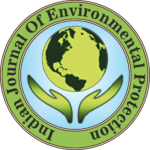IJEP 42(14): 1725-1731 : Vol. 42 Issue. 14 (Conference 2022)
R. Setiati1*, Shabrina Sri Riswati1 and A. Rinanti2
1. Universitas Trisakti, Petroleum Engineering Department, Faculty of Earth Technology and Energy, Jakarta 11440, Indonesia
2. Universitas Trisakti, Environmental Engineering Department, Faculty of Landscape Architecture and Environmental Technology, Jakarta 11440, Indonesia
Abstract
The objective of this research is to acknowledge the role of sugarcane bagasse in improvement of crude oil recovery. Sugarcane bagasse is one of the solid wastes commonly found in Indonesia. The impact of sugarcane processing is the generation of large sugarcane bagasse wastes, which are sugarcane that have gone through several milling processes. The method used to overcome the problem is by utilizing sugarcane bagasse as the surfactant. Sugarcane bagasse can be processed into surfactants through hydrolysis and sulphonation processes. The produced surfactant was used as injection fluid in an oil reservoir. The compatibility of this surfactant was previously measured before it was applied to the core injection process. The compatibility test shows that surfactant bagasse was compatible with light crude oil. The surfactant can form middle phase emulsion with lower interface tension of oil and formation of water, which was previously higher. With the low interfacial tension, oil grains can be moved more manageablely, whereas oil can be reproduced. Based on that, we can conclude that sugarcane bagasse as solid waste can be used to improve oil recovery rate as a surfactant.
Keywords
Sugarcane bagasse, Surfactant, Oil crude, Solid waste, Recovery
References
- Yogaswara, M.F., J. Juwana and Y.S.B. Sari. 2019. Indonesia J. Urban Env. Tech., 3(1):67-83.
- Listyadi, D., D.M. Setiawan and N.S.H. Ilminnafik. 2019. Lecturer Research Rep.
- Dharma, U.S., N. Rajabiah and C. Setyadi. 2017. J. Teknik Mesin Univ. Muhammadiyah metro. 6(1).
- Maulinda, I. and H.J. Mardimata. 2019. Teknol. Kimia Unimal., 8(1):1-97.
- Hermiati. 2010. J. Litbang Pertanium. 29(4).
- Trisakti, B. and Y.I. Silitonga. 2015. J. Teknik Kimia USU. 4(3).
- Wijayanti, R. 2009. Activated charcoal from bagasse as adsorbent in purifying used cooking oil. Departemen Kimia, Fakultas Matematika dam Hmu Pengetahuan Alam, Institut Pertanian Bogor.
- Shofa, 2012. Making actiated carbon made from bagasse by activating potassium hydroxide. Teknik Kimia, Universitas Indonesia.
- Nasution, W.M. and Mora. 2018. Fisika Unatd., 7(2).
- Angelo, C. and A.P.J.F. Setiawan. 2019. J. Intro., 7(2):511-514.
- Samadi, W. and S. Sabda. 2015. Agripet., 15(2).
- Rafles, A. El. Harahap and D. Febrina. 2016. J. Peternakcn. 13 (2):59-65.
- Isnaeni, A.A. Hamida and N.F. Nasution. 2019. Pharmaciana. 9(2).
- Sholahuddin, I. 2019. Utilization of local potential sugarcane bagasse into chips as an effort to improve family welfare and economy. Available at:https://www.kompasiana.com/irfansholahuddin/Sc662017ab12ae196148aca7/.
- Ahmad, T. and D.N. Meehan. 2012. Performance of oil reservoirs. Available at:https://www.science direct.com/book/9780123855480/advanced-reservoir-management-and-engineering.
- Vishnyakov, V., et al. 2019. Primer on enhanced oil recovery. Gulf Professional Publishing Book. DOI:10.1016/C2017-0-03909-5.
- Ansyori, M.R. 2018. Swara Patra. 8(2).
- Sheng, J.I. 2015. Petroleum. 1(2):92-105. DOI:10.1016/j.petlm.2015.07.003.
- Nowrouzia, I., M. Amir and A.K. Manshad. 2020. Petroleum Sci. Env., 189:106901.
- Sandersen, S.B. 2012. Enhanced oil recovery with surfactant flooding. Center for Energy Resources Eng., (CERE), Denmark.
- Ahmad, S. and K.A. Elraries. 2018. Intechopen Book. DOI:10.5772/intechnapen.75778.
- 22.Setiati, R. 2017. Synthesis and characterization of sodium lignosulphonate from bagasse : The effects of conceptration and salinity toward the performance of oil injection in core. Dissertation. Bandung Institute of Technology (ITB), Bandung, Indonesia.
- Yanhua, J., et al. 2010. Energy Sources. 26(4):409-414.DOI:10.1080/00908310190281528.
- Lim, Z.Q., et al. 2020. Petroleum Res., 5(2):154-163. DOI:10.1016/j.ptirs. 2019.12.002.
- Aro, T. and P. Fatehi. 2017. Chem. Sus. Chem., 10(5):DOI:10.1002/cssc.201700082.
- Akzo, N. 2011. Surface chemistry. LLC, Chicago, USA.
- Bera, A. and A. Mandal. 2015. J. Petroleum Exploration Prod. Tech., 5:255-268. Available at : https://link.springer.com/article/10.1007/s13202-014-0139-5.
- Husein, M.M. and N.N. Nassar. 2008. Curr. Nanosci., 4(4):370-380.DOI:10.2174/157341308786306116.
- Dantas, T.N.C., et al. 2019. Brazilian J. Petroleum Gas. 12(4):251-265.DOI:10.5419/bjpg.2018-0023.
- Bourrel, M. and R.S. Schechter. 1988. Microemulsian and related systems. Marcel Dekker Inc., New York.
- Aoudhia, M., et al. 2018. J. Surfactant Detergent. 9(3):287-293.
- Salager, S.L. 1977. Physico-chemical properties of surfactant water-oil mixture : Phase behaviour, micro-emulsion formation and interfacial tension. University Texas, Austin.
- El Mansouri, N.-E. and J. Salvado. 2007. Ind. Crop Prod., 26:116-124.
- Setiati, R., et al. 2019. Surfactant flooding for EOR using sodium lignosulphonate synthesized from bagasse enhanced oil recovery processes. New Technologies, Ariffin Samsuri, Intech Open.
- Fattahanisa, A., R. Setiati and Sl. Kasmungin. 2018. J. Earth Energy Sci. Eng. Tech., 1(2).
- Ristawati, A., R. Setiati and Sl. Kasmungin. 2018. J. Earth Energy Sci. Eng. Tech., 1(2).
- Setiati, R., et al. 2021. Indonesion J. Urban Env. Tech., 4(2):183-195.
